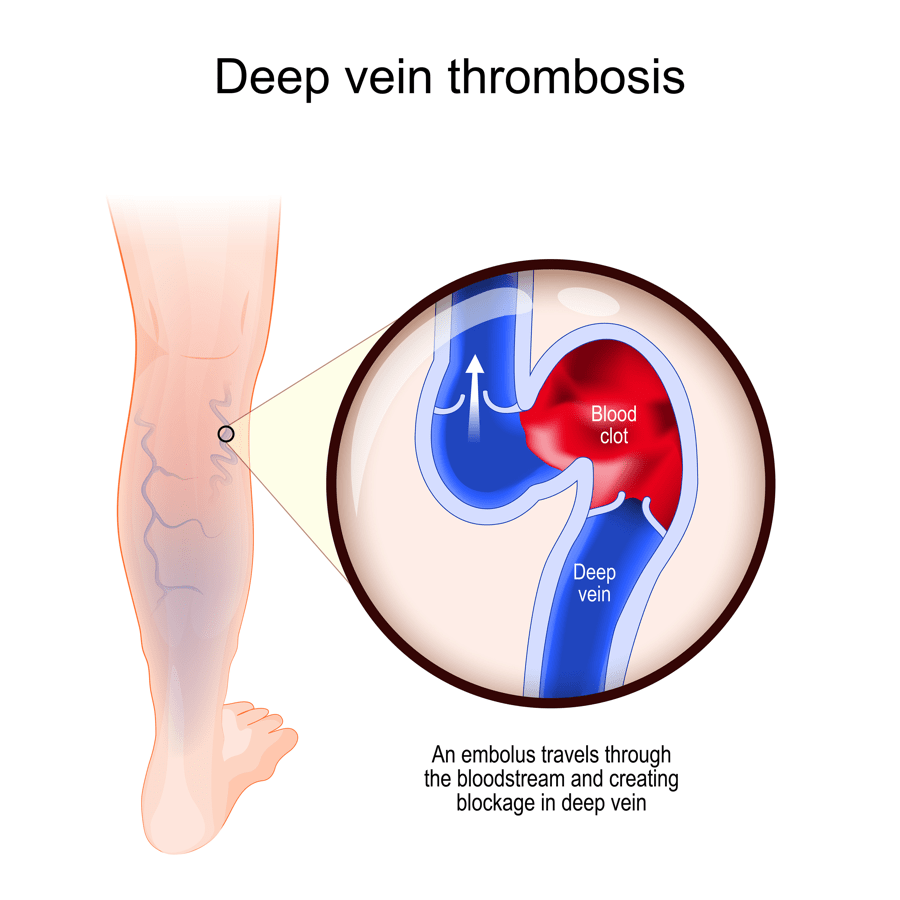Deep Vein Thrombosis (DVT) can be a silent but serious medical condition affecting countless lives. While many people have risk factors and symptoms of DVT, it’s important to explore the evolving world of medical devices designed to enhance treatment and prevent blood clots, which can lead to pulmonary embolism.
From the National Blood Clot Alliance, the chances of developing DVT are about 1 in 1000 per year, although certain factors greatly increase this risk. The cumulative chance of developing DVT over a lifetime ranges from 2 percent to 5 percent.
In this blog, we’ll share more information on DVT treatment and several medical devices, showcasing the incredible technology used to treat deep vein thrombosis. Many of these treatments offer life-changing possibilities to patients who are at risk for blood clots.
What Medical Devices Are Used to Treat DVT
One of the remarkable devices in DVT treatment is the Inferior Vena Cava (IVC) filter. This tiny yet impactful device is placed in the largest vein in the body to serve as a barrier, preventing blood clots from embarking on a dangerous journey to the lungs or heart, thereby reducing the risk of a life-threatening pulmonary embolism.
The IVC filter is a critical component of DVT management, ensuring patient safety and effective clot prevention.
In addition to the IVC filter, a range of other innovative medical devices have been introduced to enhance DVT treatment:
- Compression Stockings: These graduated compression stockings apply consistent pressure to the legs, aiding in blood circulation and reducing the risk of clot formation.
- Pneumatic Compression Devices: These devices rhythmically inflate and deflate, simulating the muscle contractions that occur during walking, effectively preventing DVT.
- Catheter-Directed Thrombolysis: A minimally invasive procedure that uses a catheter to deliver clot-dissolving medication directly to the clot site, promoting rapid resolution.
These devices, combined with the IVC filter, offer a comprehensive approach to managing and treating DVT.
Mechanical Thrombectomy
Mechanical thrombectomy devices are specialized catheters meticulously crafted to assist in the fragmentation and physical removal of either entire blood clots or clot segments during a minimally invasive procedure. This procedure offers rapid restoration of blood flow, potentially leading to reduced medication requirements. Furthermore, it may help mitigate the risk of vein valve damage, a factor often associated with post-thrombotic syndrome.
What are Intermittent Pneumatic Compression Devices?
Intermittent pneumatic compression (IPC) devices are used to help prevent blood clots in the deep veins of the legs. The devices use cuffs around the legs that fill with air and squeeze your legs. This increases blood flow through the veins of your legs and helps prevent blood clots.
Beyond the clinical aspect, it’s fascinating to explore the quirky and unexpected facets of DVT treatment devices. For instance, pneumatic compression devices, often playfully referred to as ‘leg squeezers,’ are often used in DVT prevention.
These devices rhythmically inflate and deflate, mimicking the natural muscle contractions during walking. The image of patients with “dancing” legs due to inflatable devices often helps patients ease into treatments.
Elastic Compression and External Mechanical Compression Devices
Additionally, graduated elastic compression bandages and external mechanical compression devices provide further options for DVT management, ensuring that treatment can be both effective and comfortable.
Risks of Going Untreated for Deep Vein Thrombosis
Deep Vein Thrombosis poses significant risks, especially when left untreated. One of the most concerning complications is the potential for a pulmonary embolism (PE). If a blood clot dislodges from the veins and travels to the lungs, it can block the pulmonary arteries, which are responsible for supplying oxygen to the body.
This life-threatening condition can lead to chest pain, shortness of breath, and, in severe cases, even death. Furthermore, untreated or recurrent DVT can cause long-term damage to the veins, increasing the risk of chronic conditions like post-thrombotic syndrome. Understanding the dangers of DVT and the importance of prompt and effective treatment is necessary in preventing these serious health complications.
Frequently Asked Questions About DVT
Why is DVT treatment necessary?
DVT treatment prevents the blood clot from growing larger, breaking loose, and potentially traveling to the lungs or heart, leading to a pulmonary embolism. Treatment also helps alleviate pain, swelling, and the risk of long-term complications.
How is DVT typically treated?
DVT treatment often involves anticoagulant medications to thin the blood and prevent new clots from forming. In some cases, thrombolytic therapy, which involves medications to dissolve the clot, or mechanical devices, such as an IVC filter, may be used to manage the clot.
What medical devices are used in DVT treatment?
Medical devices such as the Inferior Vena Cava (IVC) filter, compression stockings, pneumatic compression devices, catheter-directed thrombolysis, and venous stents can play an important role in DVT management.
What are the common risk factors for developing DVT?
Understanding the risk factors for DVT, such as prolonged immobility, surgery, family history, and certain medical conditions, can help individuals take preventive measures and recognize potential symptoms.
What lifestyle changes can complement DVT treatment?
Alongside medical treatment, lifestyle modifications, such as regular exercise, maintaining a healthy weight, and avoiding tobacco use, can be beneficial for reducing the risk of DVT and improving overall vascular health.
Talk to a Deep Vein Thrombosis Specialist
In the dynamic world of medical devices, innovation knows no bounds. If you or a loved one are grappling with DVT, why not have a conversation with experts who can guide you through the latest treatments and technologies?
At St. John’s Vein Center, our DVT specialists are here to provide you with personalized care and cutting-edge solutions. We encourage you to schedule an appointment with us today to discuss your unique needs and explore the most advanced treatment options available for DVT.








